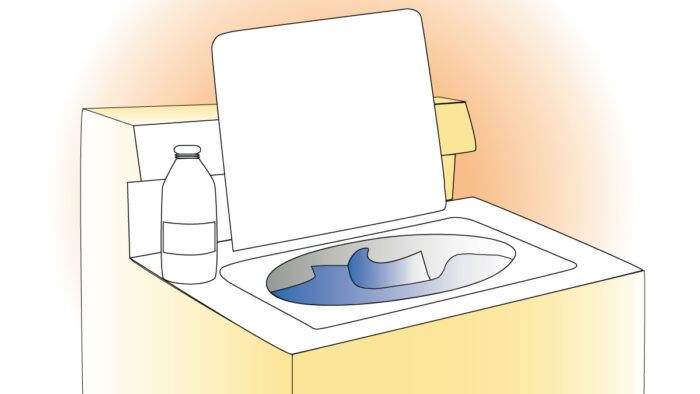
Q: I’ve heard that denim needs to be washed and dried more than once to reach its maximum shrinkage. What routine should I follow to prepare denim to make a pair of jeans?
—S. Green, via email
A: Jennifer Hasemann, a frequent Threads author, and Patricia Robison, author of “Designer Denim” (no. 146), contributed to this answer:
There are several important reasons to prewash denim. New denim can be very stiff because of the dye, sizing, and other chemicals that are added during manufacturing. As it is washed, dye is released from the fibers and the fabric becomes lighter blue. It also becomes significantly softer. Denim also has progressive shrinkage, which must be managed before you sew it.
A general rule for 100 percent cotton fabrics is to wash and machine-dry three cycles to take care of most of the shrinkage. In a stretch-denim blend, if there is more than 8 percent Lycra (spandex), do not dry it in the dryer. A hot dryer kills the Lycra’s stretch, and its elasticity is lost. This is less important if the Lycra content is only 1 to 3 percent, which is more typical in denim blends, but it is still a good idea to use a cooler dryer temperature to preserve the Lycra’s springiness.
Fading in the wash is inevitable. Some detergents are harsher on color than others, however, so experimenting with the soap is a good idea. Another concern with denim is streaking and wash-crease marks caused by dye loss and abrasion. Although such marks are random and uncontrollable, there are strategies to reduce them. One tip is to cut the denim into pants lengths before washing, so a long yardage doesn’t wad up in the wash. Also, try adding a little fabric softener to the rinse to minimize wrinkling.
Denim shrinks most significantly in length. Here’s a final construction tip: After sewing jeans, but before hemming them, throw them in the wash one more time. Make sure you serge the raw hem edges first.
Have a Question? Send it to us and we’ll find an expert’s answer.
via mail: Threads Q&A, PO Box 5506, Newtown, CT 06470-5506
via email: ThreadsQ&[email protected]































This mentions nothing about the fact that (as far as I know) the shrinkage and post-construction fading is part of the desirable traits of jeans and many other kinds of denim garments, so the advice to wash before hemming will result in hems that look home-done